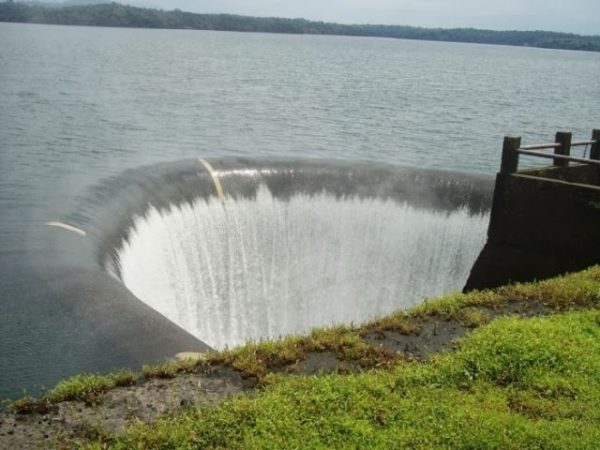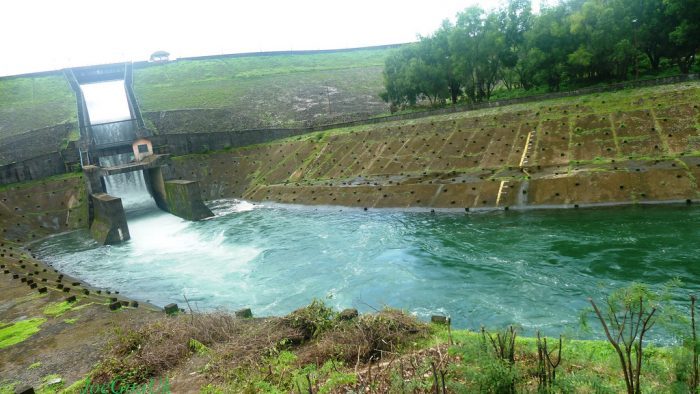While people visit Goa looking for a good time on its beaches, it’s easy to forget that the hinterland also holds some interesting places to visit. The state has rivers, lakes, and even waterfalls. Some of these aren’t the safest to visit at all times of the year but people still go out of curiosity. And if curiosity is what’s driving them, then why not visit one of Goa’s dams? The Selaulim Dam in South Goa is a fun and educational place to visit.
The Selaulim Dam in Sanguem, South Goa
Sanguem taluka in South Goa is host to the Selaulim Dam. The dam is one of Goa’s lesser-known tourist spots but a great place to visit. It lies on the Selaulim River at about 5 kilometres from Sanguem town. The major towns of Margao and Panjim lie at distances of 37 kilometres and 70 kilometres respectively from Sanguem.
The dam is an integral component of the Salaulim Irrigation Project which envisages benefits of irrigation and drinking water supply. It is a composite earth-cum-masonry dam of 42.7 metres (140 ft) height with a water spread area of 24 km2 (9.3 sq mi). It was initially planned to provide irrigation to an ultimate potential of 14,326 hectares (35,400 acres) and water supply of 160 million litres per day (MLD) to South Goa; the water supply component for domestic and industrial use is now increased to 380 MLD.
The Selaulim Dam Project
The length of the Selaulim dam is 1,004 metres (3,294 ft) at the crest. The reservoir water spread area (within Goa without inter-state implications) is 24 km2 (9.3 sq mi). The dam structure has a volume content of 2.714 million cubic metres (MCM). The gross storage capacity of the reservoir is 234.361 MCM with the live or effective storage capacity fixed at 227.157 MCM.
The spillway which is of the unique Duckbill type (Morning Glory type) is an ungated structure located in the gorge section with a length of 44 metres (144 ft). This is designed to pass an estimated Design Flood Discharge of 1,450 cubic metres (51,000 cu ft)/s. Out the total live storage of about 227 MCM, 126 MCM is for irrigation and the balance 101 MCM is earmarked for domestic and industrial water use. As a result, 220 MLD of water is available for industrial and domestic use in South Goa, in addition to 160 MLD originally provided in the approved project.

Image credit – http://www.chillgoa.com/placestochill/details.php?id=17
The Reservoir
But creating the Selaulim Dam had its consequences. In order for the reservoir to come into existence, around 20 villages in the area were either partially or fully submerged. Locals had to be resettled. Some mines were shut as they were submerged but their owners received compensation. A 2.5 metres (8 ft 2 in) tall figure of Mother Goddess (from the 5th century BC), weighing 16 tonnes, came under the submergence of the village of Curdi (Kurdi). It was relocated at Verna.
Another ancient temple from the 10th or 11th century of the Kadamba period, also in Kurdi, had to be relocated to a site 17 kilometres (11 miles) away. The temple’s relocation had to be done carefully. It took 11 years to be dismantled and moved to a new location. This was only done after each stone had been methodically numbered.
Other attractions at the Selaulim Dam
The Selaulim Dam has a very pretty Botanical garden as well as a Rock garden. It’s a great place for a picnic and also educational. The nearest major town is Margao and it’s an easy drive of approximately 35-40 kilometres by car. Best time to visit is during the monsoons. This is the perfect time to capture the charm of the dam and surrounding area. The Western Ghats offer the most breathtaking backdrop for the dam. The dam is open on weekdays to the public between 9 am and 6:30 pm. As long as one is aware of their surroundings and adheres to the rules and regulations of the Selaulim Dam, it’s a great experience.
Check out the below articles for more information:
Selaulim canal to produce solar energy!
Goa’s Atlantis? A century-old submerged Hindu temple resurfaces in Goa
Information credit – Wikipedia
ItsGoa/MAY/KDGP


